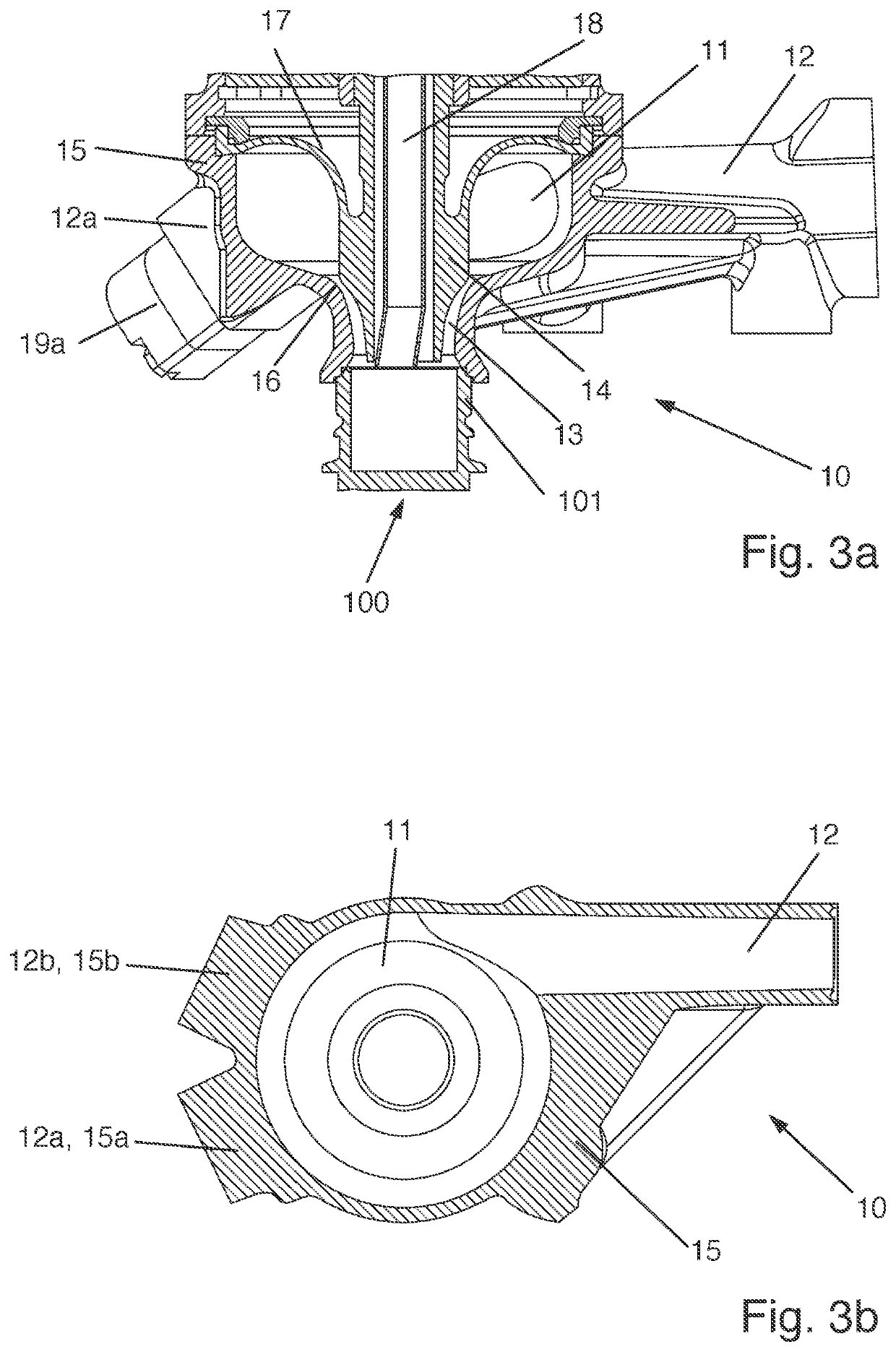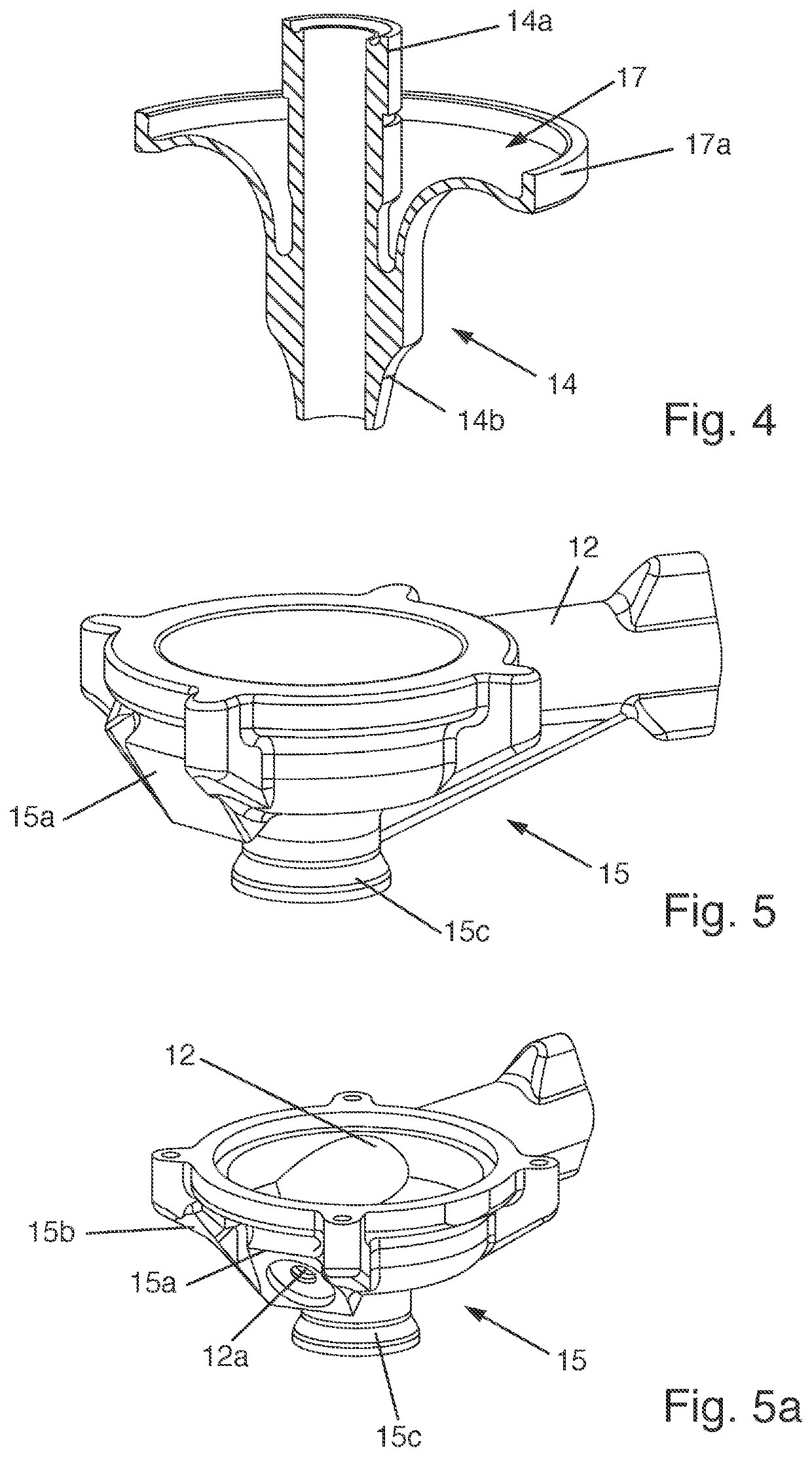Multifunctional filling valve
a multi-functional, filling valve technology, applied in the field of filling valves, can solve the problems of complex system design and process sequence, affecting the hygienic effect of the product, and limiting the use of volumetric metering methods, etc., to achieve the effect of improving the hygienic
- Summary
- Abstract
- Description
- Claims
- Application Information
AI Technical Summary
Benefits of technology
Problems solved by technology
Method used
Image
Examples
Embodiment Construction
[0068]Exemplary embodiments are described hereinafter with reference to the figures. In this case, elements which are the same, similar or similar-acting are provided with identical reference numerals in the figures and a repeated description of these elements is dispensed with in some cases in order to avoid redundancies.
[0069]FIG. 1 is a perspective view of the valve base body 10 of a filling valve 1 (see FIG. 6) with swirl generation. FIG. 2 shows the valve base body 10 in a cross-sectional view.
[0070]The valve base body 10 has a swirl chamber 11 designed as an annular duct and / or torus. The valve base body 10 also has a main inlet 12, not visible in the perspective view in FIG. 1, which opens tangentially or substantially tangentially into the swirl chamber 11. The main inlet 12 is shown schematically in FIG. 2. The main inlet 12 is additionally shown in the exemplary embodiments of FIGS. 2, 3a, 3b and others.
[0071]In the lower region of the valve base body 10 the swirl chamber ...
PUM
 Login to View More
Login to View More Abstract
Description
Claims
Application Information
 Login to View More
Login to View More - R&D
- Intellectual Property
- Life Sciences
- Materials
- Tech Scout
- Unparalleled Data Quality
- Higher Quality Content
- 60% Fewer Hallucinations
Browse by: Latest US Patents, China's latest patents, Technical Efficacy Thesaurus, Application Domain, Technology Topic, Popular Technical Reports.
© 2025 PatSnap. All rights reserved.Legal|Privacy policy|Modern Slavery Act Transparency Statement|Sitemap|About US| Contact US: help@patsnap.com



